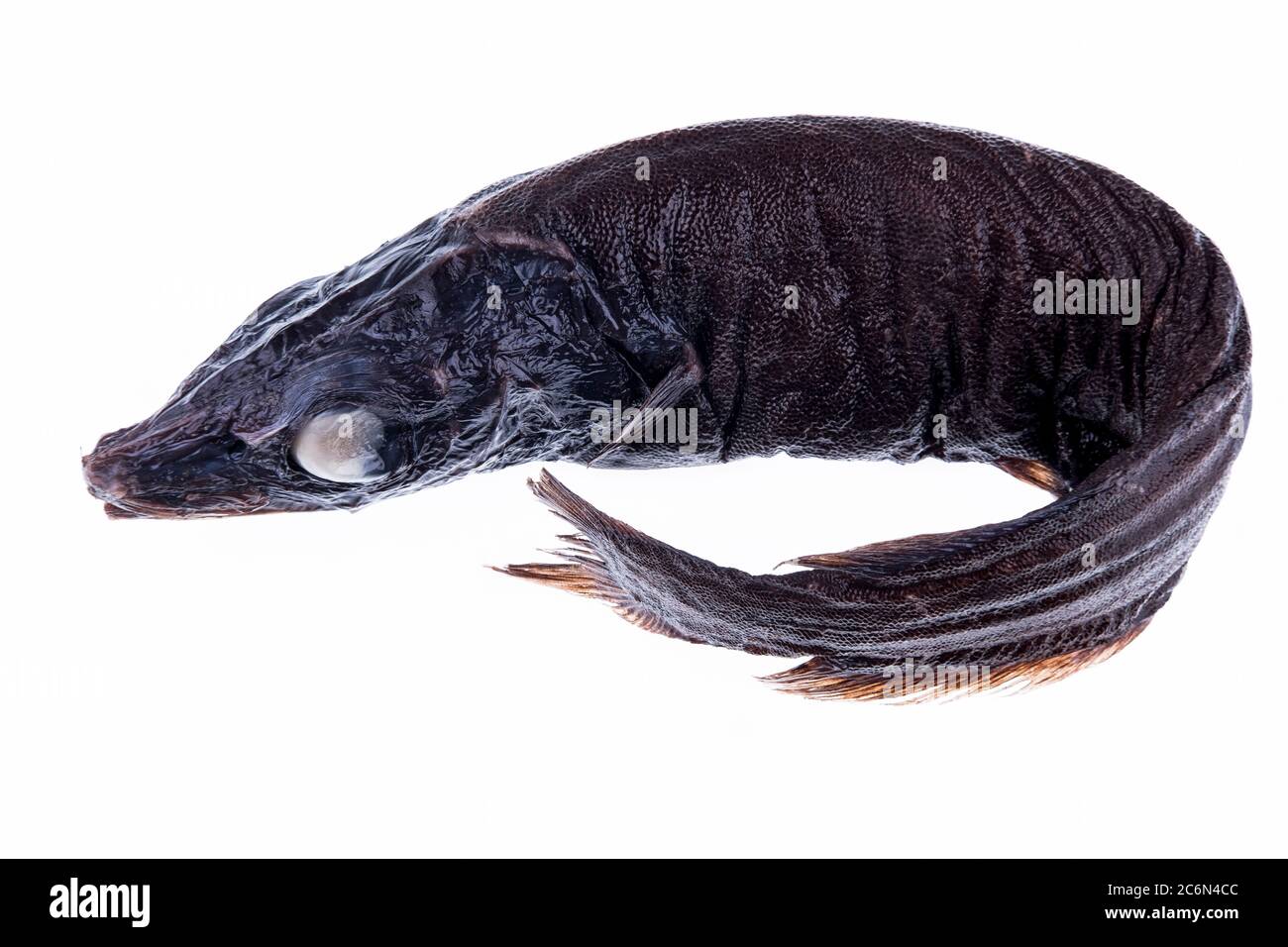Trachonurus sulcatus fished in Mauritania (East Tropical Atlantic Ocean) from the collection of the Spanish Institute of Oceanography of Malaga, Spain

Image details
Contributor:
Xabier Mikel Laburu / Alamy Stock PhotoImage ID:
2C6N4CCFile size:
68.7 MB (2.3 MB Compressed download)Releases:
Model - no | Property - noDo I need a release?Dimensions:
6000 x 4000 px | 50.8 x 33.9 cm | 20 x 13.3 inches | 300dpiDate taken:
20 July 2018Location:
FuengirolaMore information:
Strange creatures lurk in the deep seas, creatures which to most of us look as if they were from another planet. An inhospitable world where most of us will ever see these creatures in nature documentaries on TV. But far from those dark and cold waters, on solid ground, mainly kept in cooled rooms of museums and scientific institutions, thousands of these spooky creatures are stored for taxonomic and genetic purposes, ‘swimming’ in a jar with a diluted percentage of formaldehyde or in ethanol. Only in rare occasions, as this year at the British Natural History Museum, these animals are shown in public to avoid that light or temperature can deteriorate the specimens. Far from a simple curiosity factor for public or scientists, the reality is that little is known about the populations of creatures which live under 800m, which is generally the bottom line for commercial fishing. This is the reason why most of these creatures are considered as potentially in danger of extinction, and where the importance of these collections set in. In heavily contaminated oceans, where extraction fishing pressure gets heavier every day. Where underwater mining, specially in the western African coast, fixes its objectives deeper and deeper. Perhaps by the time we can truly understand the delicate equilibrium in the dark deep sea little will be left to preserve except for these jar imprisoned animals. The animals shown in this feature were fished in western African deep Atlantic waters and must be credited to the Marine Fauna Collection from the Spanish Institute of Oceanography.